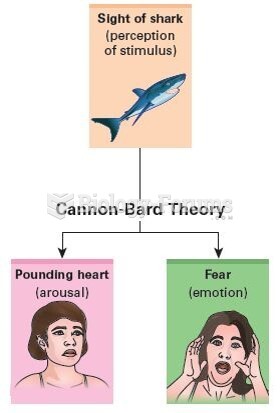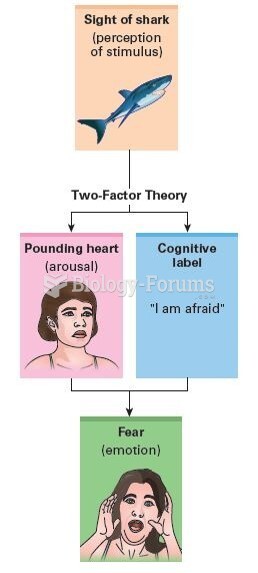Answer to Question 1
The James-Lange theory of emotion suggests that emotional feelings result from bodily arousal. For example, you experience the emotion of fear after the environmental stimulus has triggered bodily arousal. This seems a little backwards to many people. According to this theory, a bear bounds out of the woods and roars, you start running, and when you notice your heart thumping you realize you are afraid.
The Cannon-Bard theory suggests emotional feelings and bodily arousal occur simultaneously. So when the bear appears, we simultaneously become afraid and experience physiological arousal. Since there is not much variability in the type of bodily arousal associated with different emotions, such arousal could not logically cause a particular emotional feeling. The twofactor model proposes that emotional experiences depend on our level of general arousal and a cognitive interpretation, or labeling, of that arousal. When we are aroused, we look around for cues and signals in the environment and then label the arousal as a particular arousal. So the same
arousal may be labeled as fear in one situation but anger in another. The dual- pathway theory suggests that there are two pathways involved in the processing of emotion. One pathway leads from the thalamus to the amygdala; it produces the emotional response of arousal. The other pathway leads to the cortex, where further processing of the stimulus occurs. This pathway produces the conscious awareness of the emotion.
Answer to Question 2
a







